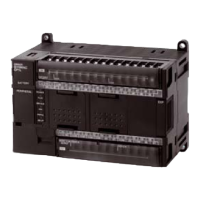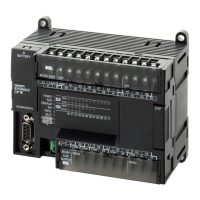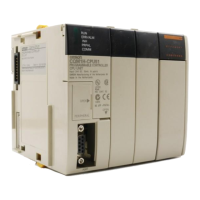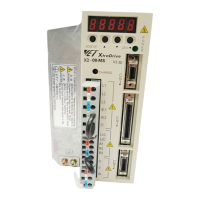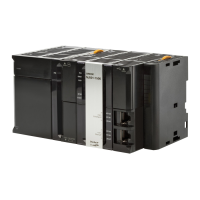180
Condition Flags Section 4-18
Using the Condition Flags The Condition Flags are shared by all of the instructions, so their status may
change often in a single cycle. Be sure to read the Condition Flags immedi-
ately after the execution of instruction, preferably in a branch from the same
execution condition.
Since the Condition Flags are shared by all of the instructions, program oper-
ation can be changed from its expected course by interruption of a single task.
Be sure to consider the effects of interrupts when writing the program. Refer
to SECTION 2 Programming of CS/CJ Series Programming Manual (W394)
for more details.
The Condition Flags are cleared when the program switches tasks, so the sta-
tus of a Condition Flag cannot be passed to another task. For example the
status of a flag in task 1 cannot be read in task 2.
Carry Flag P_CY Turned ON when there is a carry in the result of an arithmetic opera-
tion or a “1” is shifted to the Carry Flag by a Data Shift instruction.
The Carry Flag is part of the result of some Data Shift and Symbol
Math instructions.
Greater Than Flag P_GT Turned ON when the first operand of a Comparison Instruction is
greater than the second or a value exceeds a specified range.
Equals Flag P_EQ Turned ON when the two operands of a Comparison Instruction are
equal the result of a calculation is 0.
Less Than Flag P_LT Turned ON when the first operand of a Comparison Instruction is less
than the second or a value is below a specified range.
Negative Flag P_N Turned ON when the most significant bit (sign bit) of a result is ON.
Overflow Flag P_OF Turned ON when the result of calculation overflows the capacity of the
result word(s).
Underflow Flag P_UF Turned ON when the result of calculation underflows the capacity of
the result word(s).
Greater Than or
Equals Flag
P_GE Turned ON when the first operand of a Comparison Instruction is
greater than or equal to the second.
Not Equal Flag P_NE Turned ON when the two operands of a Comparison Instruction are
not equal.
Less Than or
Equals Flag
P_LE Turned ON when the first operand of a Comparison Instruction is less
than or equal to the second.
Always ON Flag P_On Always ON. (Always 1.)
Always OFF Flag P_Off Always OFF. (Always 0.)
Name Symbol Function
=
Instruction A
The result from instruction A is
reflected in the Equals Flag.
Instruction B
Instruction
LD
Instruction A
AND
Instruction B
Operand
Condition Flag,
e.g., =
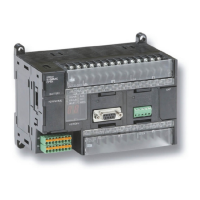
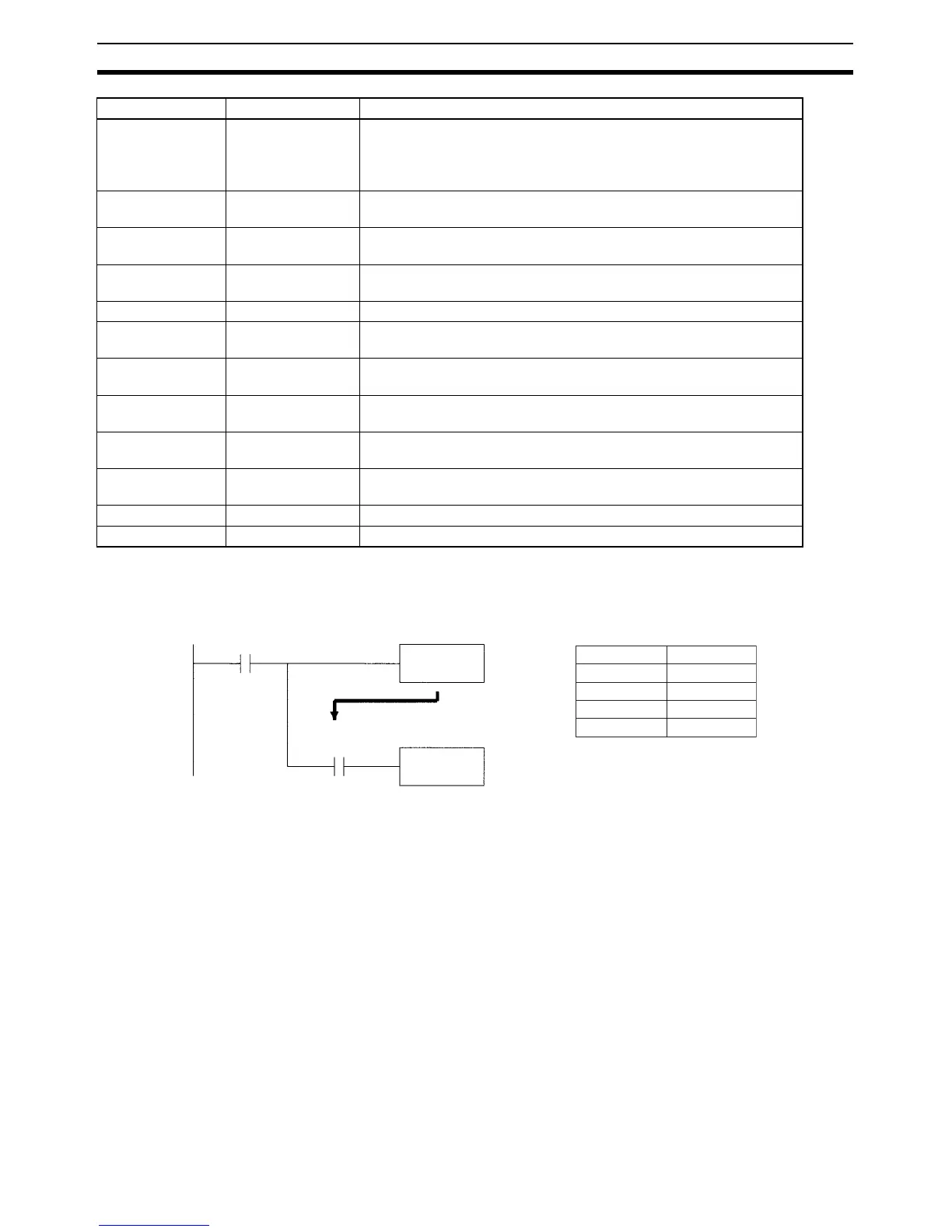